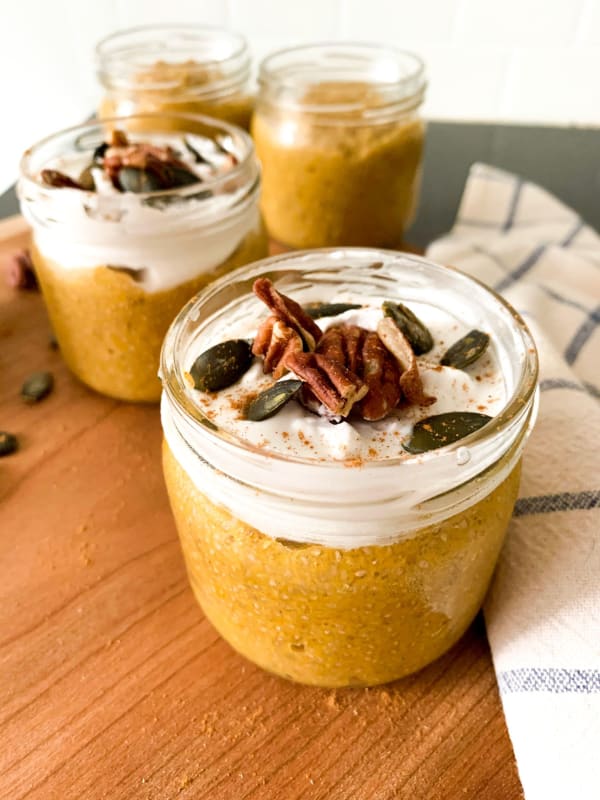How to Manage Iron Deficiency on a Plant-Based Diet

How to Manage Iron Deficiency on a Plant-Based Diet
Optimize iron intake on a plant-based diet with top sources and absorption tips.
Well-formed plant-based diets can be tremendously beneficial and have been shown to reduce rates of heart disease, type 2 diabetes, obesity, high blood pressure, kidney stones, and cataracts. However, as with any diet, there are possible pitfalls that do warrant mindfulness. And one of those, to be sure, is the possibility of coming up short on iron.
Iron deficiency is one of the most common nutritional deficiencies worldwide, and those of us on plant-based diets are particularly susceptible to it. Ensuring adequate intake is essential since iron is crucial for oxygen transport, energy production, and overall well-being. However, plant-based diets rely solely on non-heme iron, which is less readily absorbed than heme iron from animal sources.
Fortunately, with the right strategies, plant-based eaters can optimize iron intake and absorption to maintain healthy levels entirely on par with omnivores. This guide provides a focused approach to managing iron levels on a plant-based diet, covering the best food sources, absorption-enhancing strategies, and supplementation considerations.

Why Iron is Essential
Iron is critical in forming hemoglobin, the protein in red blood cells responsible for carrying oxygen throughout the body. It also supports immune function, metabolism, cognitive health, hormonal balance, and more. Because the body cannot produce this crucial mineral on its own, it must be obtained through diet or supplements.
In many cases, plant-based diets actually contain more iron than omnivore diets! So why would there be any issue? It all comes down to absorption- not the iron in the food, but the iron we actually get out of it.
Iron comes in two forms:
- Heme Iron: Found in animal products and absorbed efficiently (15–35 per cent).
- Non-heme Iron: Found in plant foods and absorbed at a much lower rate (2–20 per cent), making absorption absorption strategies crucial for plant-based eaters.

Iron Deficiency and Symptoms
Without sufficient iron, the body struggles to produce hemoglobin and healthy blood or oxygenate tissues. This can lead to a variety of symptoms, including:
- Fatigue and physical weakness
- Pallid skin
- Thinning hair or hair loss
- Cold feet and hands
- Headaches and dizziness
- Brittle nails and hair
- Shortness of breath, wheezing or asthma
- Frequent infections
- Brain fog or difficulty concentrating
If left unchecked, iron deficiency can progress to iron deficiency anemia (IDA), a condition where low hemoglobin levels majorly impact energy levels and overall well-being.
The good news is you can avoid all of this entirely with the following 3-step plan!
Step 1: Get an Idea of How Much You Need
Plant-based eaters require more iron due to the lower bioavailability of non-heme iron and are therefore recommended to get 1.8 times more of it than omnivores.
The adjusted recommended daily allowances (RDA) are:
- Men (19+ years): 8 mg/day → 15 mg for plant-based eaters
- Women (19–50 years): 18 mg/day → 32 mg for plant-based eaters
- Women (51+ years): 8 mg/day → 15 mg for plant-based eaters
- Pregnant women: 27 mg/day → 49 mg for plant-based eaters
- Breastfeeding women: 9 mg/day → 16 mg for plant-based eaters
Step 2: Incorporate Some Top Plant-Based Sources of Iron
To meet daily iron needs, you can do better than a little bit of spinach now and then! Focus on a wide variety of nutrient-dense and iron-rich plant foods such as:
Food / Iron per 100 mg:
- Nori 19.6 mg
- Raw Sesame seeds 14.55 mg
- Cocoa Powder 13.86 mg
- Morel Mushrooms 12.18 mg
- Ancho Peppers 10.93 mg
- Soybeans 9.9 mg
- Lentil Flour 9.79 mg
- Poppy Seeds 9.76 mg
- Tofu 9.73 mg
- Kidney beans 9.35 mg
- Sundried Tomatoes 9.09 mg
- Tahini 8.95 mg
- Pumpkin Seeds 8.82 mg
- Hemp Hearts 7.95 mg
- Chia Seeds 7.7 mg
- Teff Flour 7.63 mg
- Amaranth 7.61 mg
- Lima Beans 7.51 mg
- Red Lentils 7.39 mg
- Toasted Sunflower Seeds 6.81 mg
- Dried Goji Berries 6.8 mg
- Mung Beans 6.74 mg
- Cashews 6.68 mg
- Black Olives 6.28 mg
- Fresh Parsley 6.2 mg
- Flax Seeds 5.73 mg
- Pine Nuts 5.53 mg
- Navy Beans 5.49 mg
- Great Northern Beans 5.47 mg
- Raw Sunflower Seeds 5.25 mg
- Black beans 5.02 mg
- Adzuki Beans 4.98 mg
- Chickpea Flour 4.86 mg
- Quinoa 4.57 mg
- Cooked Spinach 3.57 mg
- Prunes 3.52 mg
- Chanterelle Mushrooms 3.47 mg
- Jerusalem Artichokes 3.4 mg
- Fresh Basil 3.17 mg
- Dandelion Greens 3.1 mg
- Kale 3 mg
- Raw Spinach 2.71 mg
- Tempeh 2.7 mg
- Dried Apricot 2.66 mg
- Kimchi 2.5 mg
- Edamame 2.3 mg
Step 3: Optimize Plant-Based Iron Absorption
Not only is non-heme (plant-based) iron substantially less bioavailable than heme (animal-based) iron, but it’s also highly influenced by other dietary factors. Compared to falling into common pitfalls that reduce absorption rates, several proven methods for optimizing the absorption of non-heme iron can increase bioavailability by several hundred percent and, in extreme cases, as much as tenfold! So, if you struggle to keep your iron levels up on a plant-based diet, a little intention mixed with knowledge can make all the difference.

Pairing Iron with Vitamin C
Vitamin C may be the single most important and powerful lever at your disposal in boosting non-heme iron absorption, potentially increasing it 600 per cent. Examples of effective pairings include:
- Squeezing lemon juice over iron-rich foods
- Having orange or acerola cherry juice alongside your meal
- Adding more fresh bell peppers to dishes
- Incorporate more strawberries, kiwis, and citrus
- Adding more dried herbs to your meals, especially chives and coriander

Reducing Iron Inhibitors
Certain compounds block iron absorption, and it’s important to be aware of them:
- Phytates: Present in whole grains, nuts, seeds, and legumes, phytates (aka phytic acids) massively reduce non-heme bioavailability. Fortunately, soaking, baking, pressure cooking, prolonged boiling, sprouting, and fermenting these foods can all significantly counteract this effect.
- Polyphenols & Tannins: Found in tea, coffee, and red wine, these can block iron absorption by up to 94 per cent. Drinking these beverages two hours apart from iron-rich meals and supplements is the way to go wherever possible. If someone is having coffee with breakfast, tea with lunch, and wine with dinner
- Oxalates: Found in foods like spinach, beets, and chocolate, oxalates (aka oxalic acids) can bind to minerals like iron and calcium, preventing the body from absorbing them. Separating oxalate-rich foods from your main sources of iron, picking iron sources that don’t contain high levels of oxalates, or replacing high-oxalate foods altogether can all be effective parts of a holistic iron-boosting strategy.

Using Cast-Iron Cookware
A great way to get more iron out of your food is to ditch the Teflon and use traditional cast-iron cookware. A randomized controlled trial found that using iron cookware boosted iron content in meals by up to 16.2 per cent. The same study found that this directly translated into a significant increase in hemoglobin in the kids who ate food cooked in iron pots compared to other cookware. The best thing about this little hack is that it applies to all foods- whatever you eat, across the board!
Do You Need an Iron Supplement?
If testing has revealed that you are indeed iron deficient and you struggle to absorb iron for your personal needs through your plant-based diet alone, supplementation can be a major ally in restoring iron levels and boosting ferritin on your follow-up bloodwork. For a thorough guide to the different forms of supplemental iron and how to make the most of them, please see The Ultimate Guide to Raising Low Iron Levels.
Final Thoughts
An important truth to consider is that many people on plant-based diets are not anemic or iron deficient at all - and you don’t have to be either. A diet built around diverse, colourful plant foods can absolutely provide sufficient iron when approached with knowledge and intention.
By consistently enjoying an abundance of iron-rich foods, pairing them with vitamin C, and maximizing absorption with the techniques outlined above, plant-based eaters can maintain healthy iron levels without relying on animal products at all.
Make no mistake- a well-designed plant-based diet supported by testing and supplementation where appropriate can not only meet and exceed iron needs but also offer a wealth of palpable health benefits, including improved heart health, lower inflammation, and a diverse intake of fibre and antioxidants.
Pawlak, R., Berger, J., & Hines, I. (2016). Iron Status of Vegetarian Adults: A Review of Literature. American journal of lifestyle medicine, 12(6), 486–498. https://doi.org/10.1177/1559827616682933
The most accurate nutrition tracking app. Cronometer. (n.d.). https://cronometer.com/#oracle
Wang, T., Masedunskas, A., Willett, W. C., & Fontana, L. (2023). Vegetarian and vegan diets: benefits and drawbacks. European heart journal, 44(36), 3423–3439. https://doi.org/10.1093/eurheartj/ehad436
Zielinski, D. (2025, March 16). The ultimate guide to raising low iron levels · good recipes. Rily. https://www.rily.co/articles/the-ultimate-guide-to-raising-low-iron-levels-156





